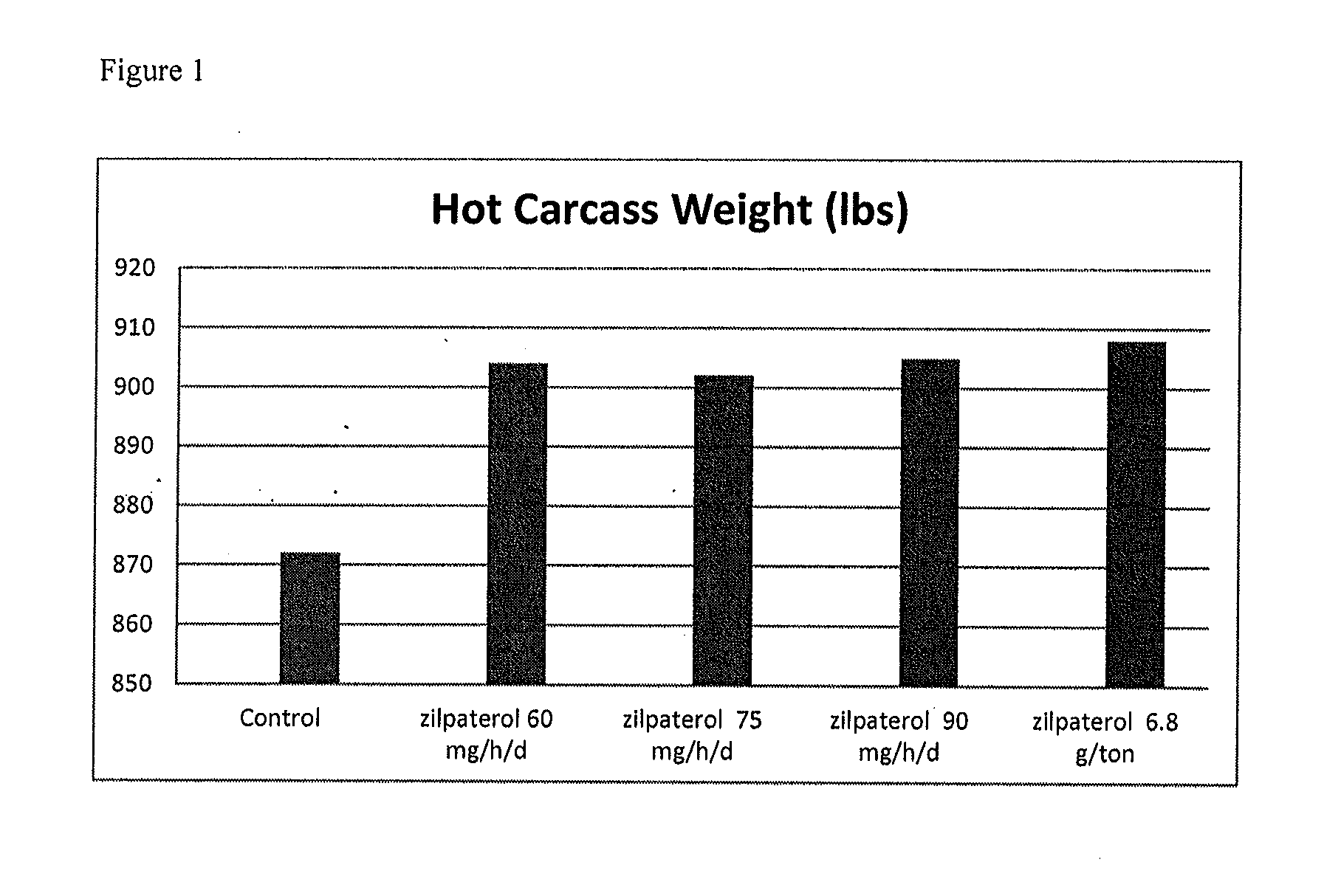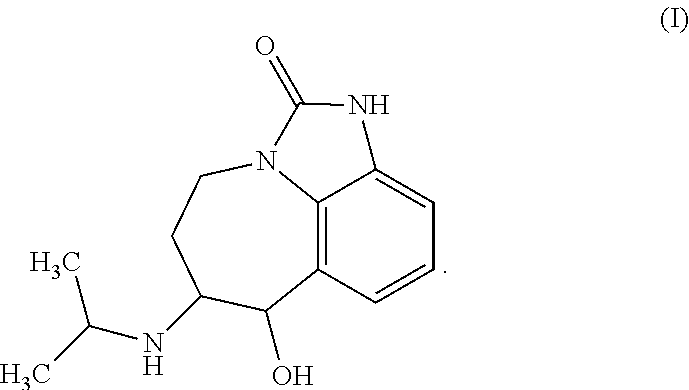A Method of Improving the Efficiency of Beef Production from Bovine Animals
a bovine animal and beef technology, applied in the field of improving the efficiency of beef production from bovine animals, can solve the problems of adding complexity, complicated and laborious process of mixing different feed compositions in different pens, etc., and achieve the effect of improving the efficiency of beef production
- Summary
- Abstract
- Description
- Claims
- Application Information
AI Technical Summary
Benefits of technology
Problems solved by technology
Method used
Image
Examples
example 1
Comparison of Component Feeding at Various Doses (60, 75 and 90 mg / Head / Day) to Continuous Feeding at 6.8 g / Ton
[0119]A multi-center, randomized complete block design was used. Four study sites enrolled 800 to 1000 head of cattle each. Cattle were randomized to 10 blocks of 80 to 100 head based on body weight, then penned in groups of 16 to 20 head per pen.
[0120]The pen served as the experimental unit. Treatment groups were as described below in Table 1:
TABLE 1Experimental Treatment GroupsGroup No.Treatment Group1Control (no Zilmax ®)2Zilmax ® component feeding - 60 mg / head / day3Zilmax ® component feeding - 75 mg / head / day4Zilmax ® component feeding - 90 mg / head / day5Zilmax ® fed continuously in a Type C feed -6.8 g / ton (90% DMB)
[0121]Commercial Zilmax® Type A Medicated Article containing 4.8% (21.77 grams per pound) of zilpaterol hydrochloride was used in the studies.
[0122]Finishing steers that were visually estimated to be approximately 58 days from finish were used in the studies. Ea...
PUM
| Property | Measurement | Unit |
|---|---|---|
| size | aaaaa | aaaaa |
| size | aaaaa | aaaaa |
| weights | aaaaa | aaaaa |
Abstract
Description
Claims
Application Information
 Login to View More
Login to View More - R&D
- Intellectual Property
- Life Sciences
- Materials
- Tech Scout
- Unparalleled Data Quality
- Higher Quality Content
- 60% Fewer Hallucinations
Browse by: Latest US Patents, China's latest patents, Technical Efficacy Thesaurus, Application Domain, Technology Topic, Popular Technical Reports.
© 2025 PatSnap. All rights reserved.Legal|Privacy policy|Modern Slavery Act Transparency Statement|Sitemap|About US| Contact US: help@patsnap.com


